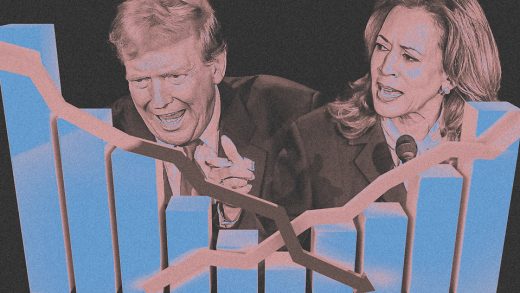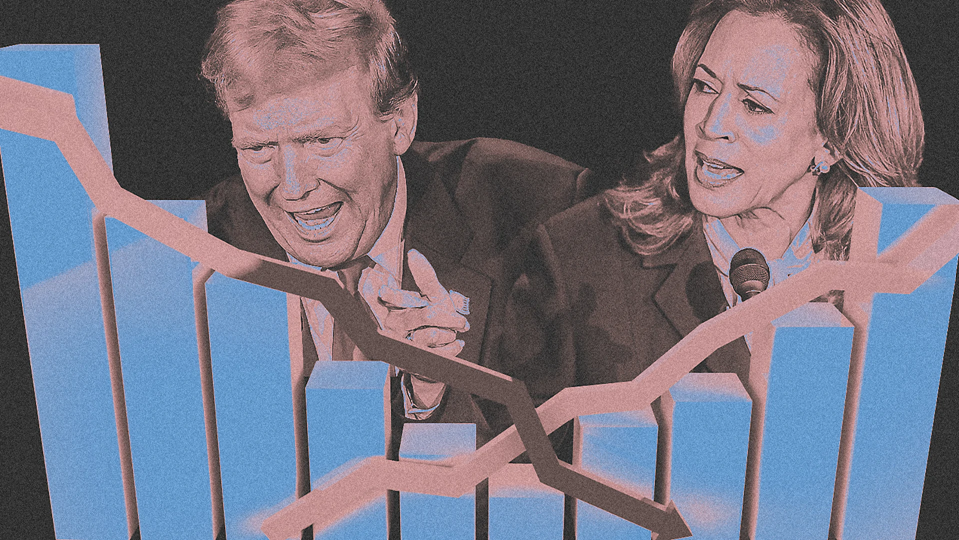Here’s how Trump and Harris’s economic policies compare on key issues
Here’s how Trump and Harris’s economic policies compare on key issues
Both candidates have offered new details about their economic proposals for taxes, cost of living, housing, and manufacturing.
BY Chris Morris
With just 40 days remaining before the presidential election, Kamala Harris and Donald Trump are both working to woo voters with their economic plans.
Trump’s “America First” agenda aims to increase tariffs on goods made in China, Mexico, and other countries and promises lower taxes. Harris’s “Opportunity Economy” proposal targets price gouging and offers subsidies for first-time homebuyers and tax credits for entrepreneurs.
Both Trump and Harris provided more insight into their plans this week, although plenty of holes remain. In Georgia today, Trump discussed his tax plan, and at a rally in Pennsylvania on Wednesday, Harris offered more details on her economic plan, along with an 82-page policy paper. Here’s where the candidates stand on some of the issues even more important to Americans.
Housing
As housing costs have increased more than 50% since 2019, Harris is pledging to offer first-time homebuyers as much as $25,000 in down-payment assistance. She has also vowed to build 3 million new housing units, increasing the overall supply, and said she would allocate $40 billion to help local governments build affordable housing.
Trump says he, too, plans to increase the number of available homes—and would do away with some regulations to achieve that, though it was unclear what those would be (and if the president even could). He also has floated the idea of using federal land for housing projects (again, unclear if that’s possible) and said he would prohibit undocumented immigrants from getting mortgages (seemingly referring to a California bill that passed the state legislature in August, allowing those who pay taxes to receive loans).
Taxes
Trump is calling for the lowering of the corporate rate from 21% to 15% for manufacturers who produce goods with American workers. Also, he plans to eliminate taxes on overtime pay and tips, as well as those paid by seniors on Social Security benefits.
Harris wants to increase the corporate tax rate to 28% to make the system “fairer.” She has pledged not to raise taxes for people who make less than $400,000 per year and said she wants to increase the tax on long-term capital gains (assets owned for more than one year) to 28% for people who make more than $1 million per year. She also proposed a “billionaire tax” on those with more than $100 million in unrealized capital gains and increasing the tax deduction for startup businesses from $5,000 to $50,000, as well as a $6,000 tax benefit for parents with newborns and boosting the child tax credit to $3,600 per child for working families.
Manufacturing
Both candidates are looking to boost manufacturing in the U.S. Trump says his tariff proposals (60% or higher on Chinese-made goods and a 20% tariff on imports from other countries) would incentivize companies to shift more manufacturing to the U.S. Earlier this week, he also vowed to “take other countries’ jobs,” saying he would offer foreign companies access to federal land to entice them to move their businesses to the U.S. (It’s unclear how possible that pledge would be to fulfill. The Bureau of Land Management has restrictions on foreign entities looking to lease lands in the U.S.)
Harris has called for federal support for both biomanufacturing, semiconductors, clean energy and the aerospace industry, citing the Biden administration’s incentives, such as the CHIPS and Science Act. If elected, she said, she would support a tax credit investing $100 billion in domestic manufacturing over the next decade.
“From our earliest days, America’s economic strength has been tied to our industrial strength,” Harris said Wednesday at a speech in Pittsburgh. “I will recommit the nation to global leadership in the sectors that will define the next century.”
Cost of living
While inflation is already in a steady decline (which led to the recent interest rate cut by the Federal Reserve), Harris has vowed to target “price gouging” in the food industry with a federal ban.
Trump has ridiculed that plan and said he would work to reduce energy prices by 50% but has offered no specifics on how that would work nor on how to bring down prices. In August, however, he promised his Cabinet would lower inflation in the first 100 days of his administration. “On my first day back in the Oval Office, I will sign an executive order directing every Cabinet secretary and agency head to use every tool and authority at their disposal to defeat inflation and bring consumer prices rapidly down,” he said.
Some economists have warned that Trump’s economic policy suggestions could cause a big surge in the federal deficit, raise consumer prices, and slow growth. Harris has the endorsement of more than 400 economists and policymakers. However, financial experts, polled by the Wall Street Journal, warn that some of the policy proposals that voters love (such as eliminating taxes on tips, which both candidates support) could actually have negative impacts on the economy.
ABOUT THE AUTHOR
(6)



